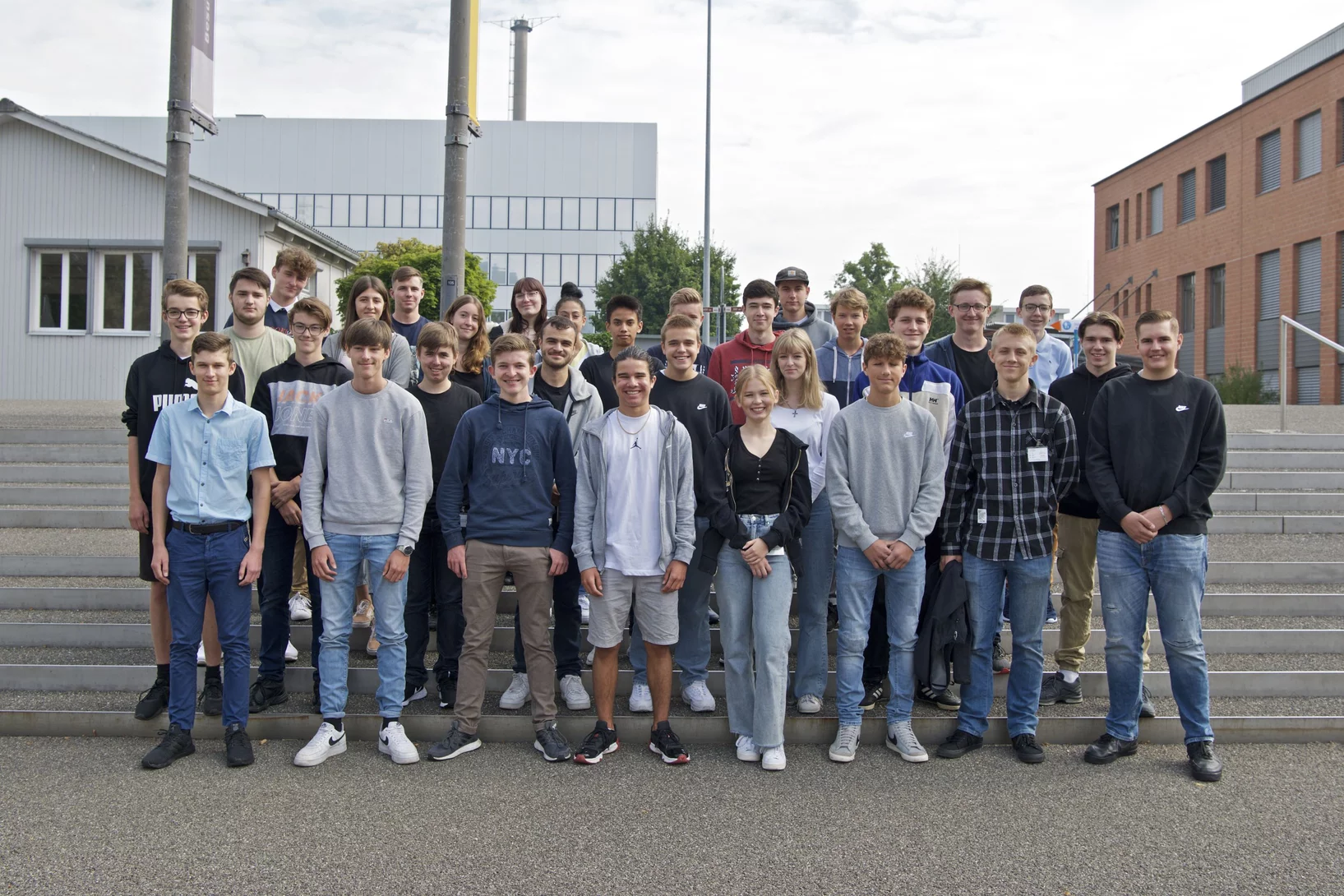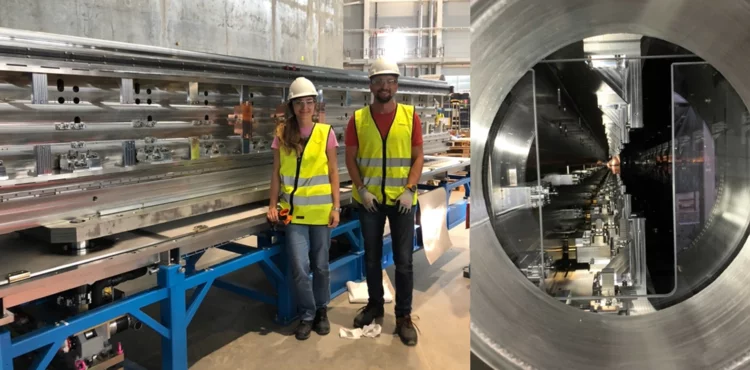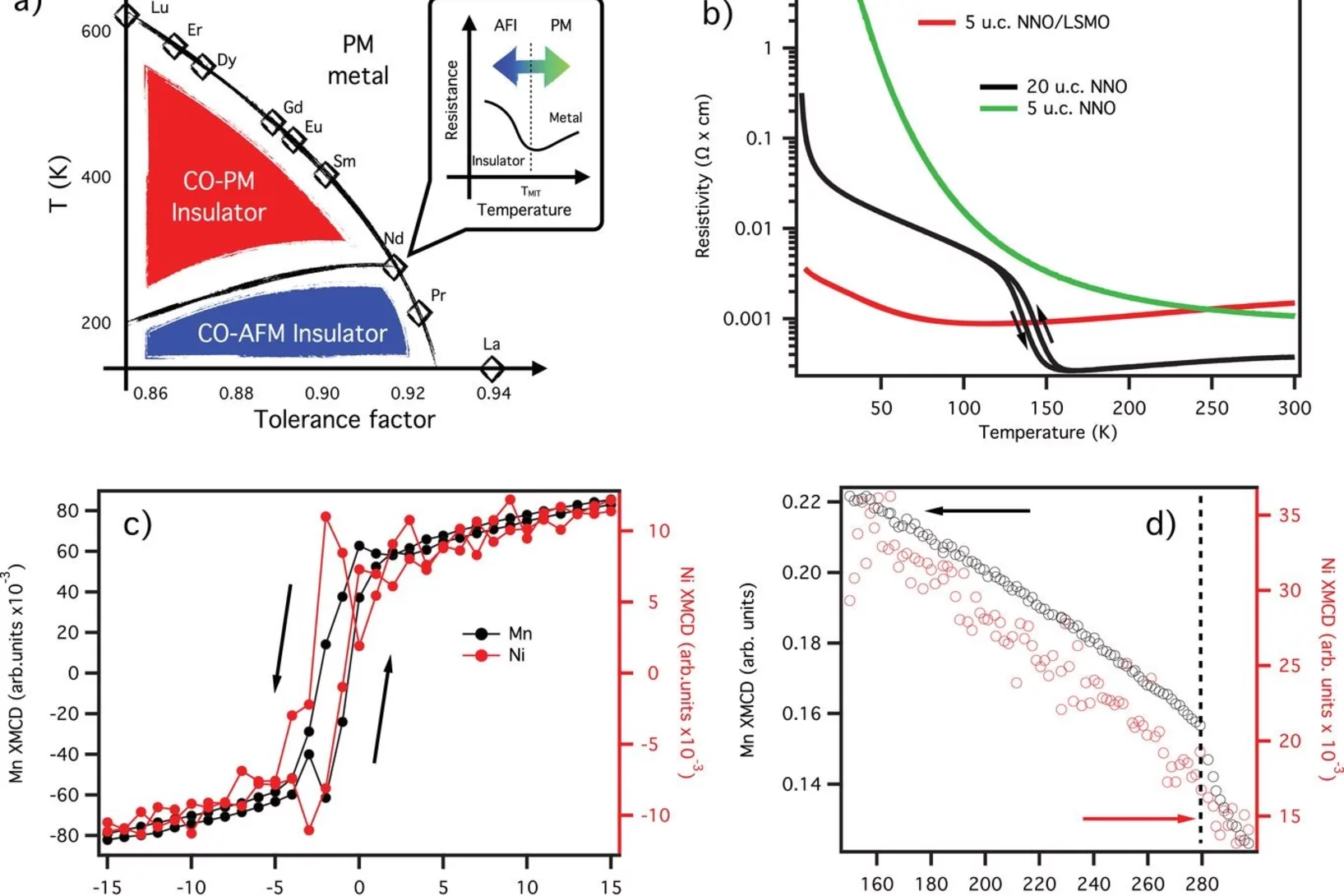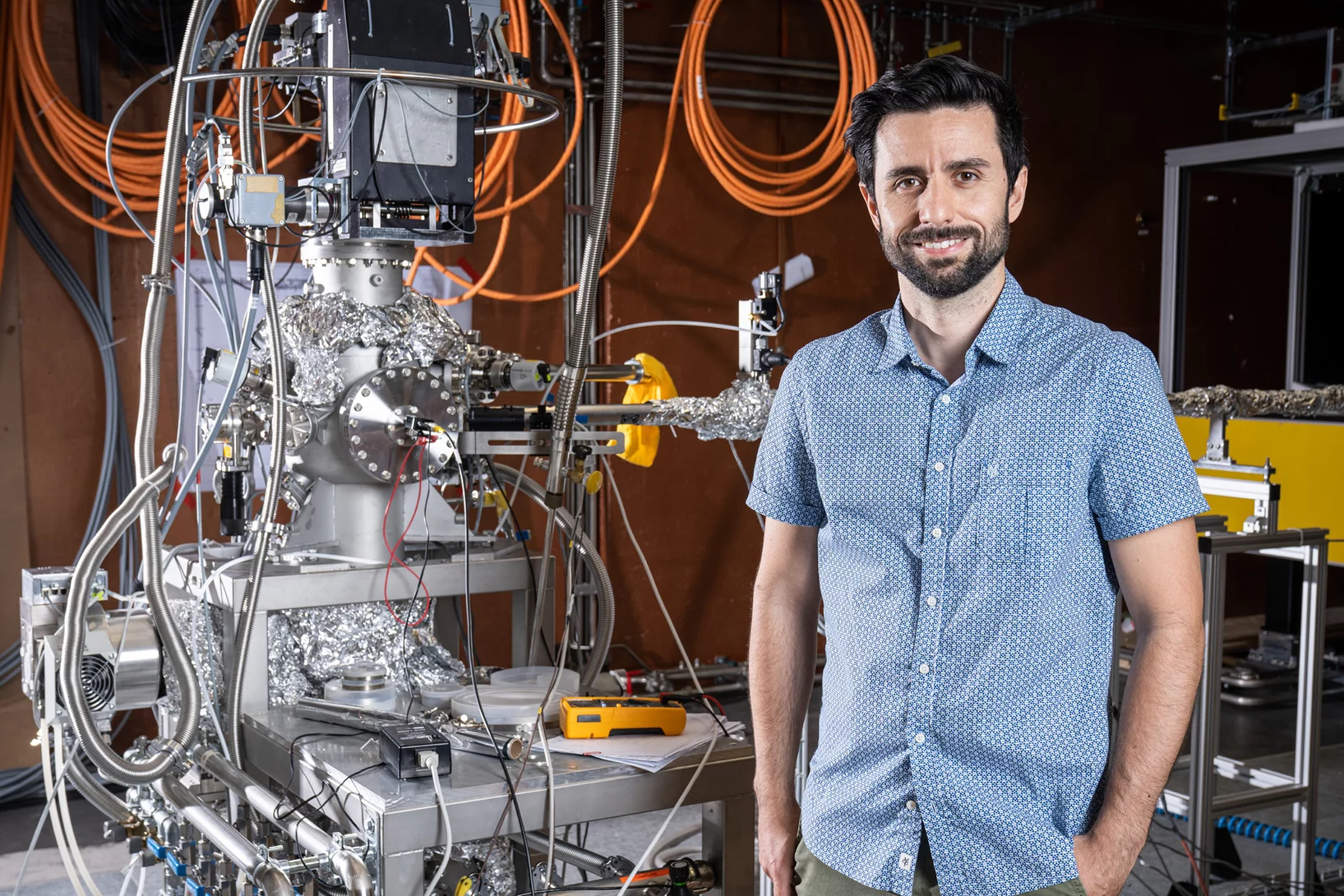At PSI, several projects are dedicated to important research questions concerning the Sars-CoV-2 coronavirus and the resulting diseases. We provide information on activities and projects, for example on investigations of lung tissue, on the production of proteins and antibodies or on ideas for new research on Covid-19.
Useful links
Einführungswoche 2021
Wir begrüssen 30 neue Lernende, Praktikantinnen und Praktikanten
Surface Analysis of Perovskite Oxynitride Thin Films as Photoelectrodes for Solar Water Splitting
Perovskite oxynitride semiconductors have attracted huge interest recently as promising photoelectrode materials for photoelectrochemical (PEC) water splitting. Oxynitride thin films grown by physical vapor deposition are ideal model systems to study the fundamental physical and chemical properties of the surface of these materials, including their evolution. Using a combination of high-sensitivity low-energy ion scattering (LEIS) and X-ray photoelectron spectroscopy (XPS), the surface evolution of LaTiOxNy (LTON) and CaNbOxNy (CNON) thin films before and after the PEC characterizations is monitored. This work provides therefore insight into the surface characteristics and evolution of LTON and CNON oxynitride thin films as photoelectrodes for PEC applications.
Novel structural orthorhombicity in an iron-pnictide superconductor
Researchers from University of Zurich describe the experimental observation of a new orthorhombic structural phase in the superconducting iron-pnictide compound Pr4Fe2As2Te0.88O4. In contrast to nematicity found in underdoped iron pnictides this phase transition is not electronically driven.
SLS: The new crane comes from above
The Swiss Light Source SLS is getting a second hall crane. But how can the 42-metre-long, 40-tonne monster get into the building? The only way is from above.
First Components of ESTIA arrive at ESS in Lund
The European Spallation Source (ESS) is currently under construction in Lund, Sweden and is set to become the most powerful neutron source in Europe and world-wide. The PSI-ESS project is delivering state-of-the-art contributions to five instruments at ESS, which will be home to a suite of 15 novel instruments. Among the five PSI instruments, the reflectometer ESTIA stands out as it is delivered in its entirety by PSI ...
Prof. Dr. Roger Schibli has been elected a Council Member 2020-2022 of the European Society for Molecular Imaging - ESMI
European Society for Molecular Imaging - ESMI
The ESMI represents and advocates IMAGING SCIENCE
The ESMI is providing an international, interdisciplinary platform for knowledge exchange in the field covering basic sciences, translational aspects as well as clinical applications.
Effectively removing CO2 from the atmosphere
With careful planning, effective CO2 capture is technically possible.
An electrochemical membrane processes for CO2 capture
CO2 capture from dilute gas mixtures (e.g., combustion flue gases, air) is increasingly recognized as a critical technological pathway towards stemming catastrophic climate change. Conventional thermal-based processes for removing CO2 from flue gas (e.g., amine scrubbing) are energy intensive and significantly reduce power plant efficiency. Electrochemical separation approaches have the potential to reduce these power requirements considerably by using electrons to transport CO2 as (bi)-carbonate ions across an alkaline membrane.
SINQ - performance of the new neutron guide system
In a recent open access article in "Neutron News" the performance of the new neutron delivery system after the SINQ upgrade has been described. Neutron flux gain factors between 2 and more than 10 have been measured at the various cold neutron instruments at SINQ.....
Proximity-Induced Novel Ferromagnetism Accompanied with Resolute Metallicity in NdNiO3 Heterostructure
Employing X-ray magnetic circular dichroism (XMCD), angle-resolved photoemission spectroscopy (ARPES), and momentum-resolved density fluctuation (MRDF) theory, the magnetic and electronic properties of ultrathin NdNiO3 (NNO) film in proximity to ferromagnetic (FM) La0.67Sr0.33MnO3 (LSMO) layer are investigated. The experimental data shows the direct magnetic coupling between the nickelate film and the manganite layer which causes an unusual ferromagnetic (FM) phase in NNO. Moreover, it is shown the metal–insulator transition in the NNO layer, identified by an abrupt suppression of ARPES spectral weight near the Fermi level (EF), is absent. This observation suggests that the insulating AFM ground state is quenched in proximity to the FM layer. Combining the experimental data (XMCD and AREPS) with the momentum-resolved density fluctuation calculation (MRDF) reveals a direct link between the MIT and the magnetic orders in NNO systems. This work demonstrates that the proximity layer order can be broadly used to modify physical properties and enrich the phase diagram of RENiO3 (RE = rare-earth element).
EuroSkills 2021 in Graz
Mario Liechti kämpft nun auf internationaler Ebene um Medaillen
PSI by night
Artificial light, singular radiance: Five pictures show PSI by night.
Welcome Aboard!
We are happy to welcome Lu Liu in our Laboratory.
Dr. Lu Liu is a Postdoctoral Researcher, who has recently joined the group of Isotope and Target Chemistry. She will work on the “PASCAL” project, under the supervision of Dr. Jörg Neuhausen.
Welcome to Céline Blétry
We warmly welcome Céline Blétry in the Laboratory of Environmental Chemistry. She joined the Surface Chemistry group on August 9, 2021 as apprentice.
Magnetic correlations in the triangular antiferromagnet FeGa2S4
The crystal structure and magnetic correlations in triangular antiferromagnet FeGa2S4 are studied by x-ray diffraction, magnetic susceptibility, neutron diffraction, and neutron inelastic scattering. We report significant mixing at the cation sites and disentangle magnetic properties dominated by major and minor magnetic sites.
First light at Furka: The experiments can begin
The path to experiments that are unique in the world is now open.
Two-color x-ray free-electron laser by photocathode laser emittance spoiler
A novel and noninvasive method for high-energy two-color x-ray FEL emission was demonstrated at SwissFEL. In the experiment, a laser emittance spoiler pulse is overlapped with the primary photocathode laser pulse to locally spoil the beam emittance and inhibit the FEL emission from the central part of the beam, ultimately resulting in X-ray emission at two wavelengths. High spectral stability and the possibility to independently control the duration and intensity ratio between the two-color X-ray pulses is demonstrated. The laser emittance spoiler also enables shot-to-shot selection between one and two-color FEL emission and further, as it does not contribute to beam losses, it is compatible with high repetition-rate FELs.
This article has been selected as the winner of the first Ernest Courant Outstanding Paper Recognition, a honor sponsored by the journal Physical Review Accelerators and Beams (PRAB) and the APS Division of Physics of Beams (DPB). This honor recognizes the most outstanding paper published in PRAB annually.
Welcome to Alessia Cesarini
Welcome to Alessia Cesarini, new PhD student in the van Bokhoven group. She is located at EMPA and works together with Andreas Borgschulte.
Secret of Stradivarius violins revealed
As an international team of researchers discovered, the old Italian masters Stradivari and Guarneri relied on unexpected chemical additives in making violins.
Soft-mode dynamics in the ferroelectric phase transition of GeTe
GeTe that exhibits a strong anharmonicity and a ferroelectric phase transition between the rhombohedral and cubic structures has emerged as one of the leading thermoelectric materials. Herein, combining molecular dynamics simulations and inelastic neutron scattering measurements, the lattice dynamics in GeTe have been investigated to reveal the soft-mode mechanisms across the phase transition.
Understanding the physics in new metals
Together with international colleagues, PSI researchers have now been able to make correlated metals more readily usable for applications in superconductivity, data processing, and quantum computers.
Lehrlingsevent Gewerbeverein 2021
Da der Lehrlingsevent des Gewerbevereins Aaretal-Kirchspiel auch dieses Jahr nicht im üblichen Rahmen stattfinden konnte, haben Vertreter der Zurzibieter Gewerbevereine die Lehrabgänger mit einem Besuch und einem Geschenk überrascht.
Feriencamp 2021
Auch dieses Jahr konnten wir mit 36 Kinder von PSI-Mitarbeitenden das Feriencamp durchführen. Wir verbrachten eine interessante und tolle Woche am PSI. Herzlichen Dank allen Helfenden, welche diese Woche überhaupt möglich machen!
Enhanced Reducibility of the Ceria-Tin Oxide Solid Solution Modifies the CO Oxidation Mechanism at the Platinum-Oxide Interface
The introduction of tin into ceria strongly influences its reducibility. In turn, the reaction mechanism towards the oxidation of carbon monoxide changes: the oxidation rate increases, the apparent activation energy decreases and the reaction order in oxygen increases.
Full-field X-ray absorption tomography reveals the chemical structure of defects in metal-organic frameworks
Cryo-full-field XANES computed tomography was used to visualize the presence and distribution of a second coordination polymer of reduced copper coordination within defect-engineered HKUST-1 MOF crystals. Observations encourage a revisitation of the structure-property relationships of defect-engineered MOFs.
Analysis of a large-scale turbulent round jet
The entire study is an investigation into the self-similarity behavior [1] of first and second order statistical quantities derived from a large-scale jet flow taken from one of the experiments in the PANDA facility using the Proper Orthogonal Decomposition (POD).
What is presented, are the merits, the potential and the characteristics of the corresponding underlying POD analysis. Proper Orthogonal Decomposition (POD) is a mathematical framework to extract large-scale structures which are otherwise eventually masked by the complexity of the fully turbulent flow; example: the meandering of a jet which is not so obvious for the original data.
First Components of ESTIA arrive at ESS
The European Spallation Source (ESS) is currently under construction in Lund, Sweden and is set to become the most powerful neutron source in Europe and world-wide. The PSI-ESS project is delivering state-of-the-art contributions to five instruments at ESS, which will be home to a suite of 15 novel instruments. Among the five PSI instruments, the reflectometer ESTIA stands out as it is delivered in its entirety by PSI ...
Synchrotron movies
Prof Philip Willmott, the author of the book 'Introduction to Synchrotron Radiation: techniques and applications' (second edition, John Wiley & Sons, Chichester, 2019. ISBN: 9781119280392), makes the scripts for the simulations and animations available to the public.
Correlation between Oxygen Vacancies and Oxygen Evolution Reaction Activity for a Model Electrode: PrBaCo2O5+δ
The role of the oxygen stoichiometry of perovskite catalysts in the oxygen evolution reaction (OER) is systematically studied in the PrBaCo2O5+δ family. The reduced number of physical/chemical variables combined with in-depth characterizations such as neutron diffraction, O K-edge X-ray absorption spectroscopy(XAS), electron energy loss spectroscopy (EELS), magnetization and scanning transmission electron microscopy (STEM) studies, helps investigating the complex correlation between OER activity and a single perovskite property, such as the oxygen content. Larger amount of oxygen vacancies appears to facilitate the OER, possibly contributing to the mechanism involving the oxidation of lattice oxygen, i.e., the lattice oxygen evolution reaction (LOER). Furthermore, not only the number of vacancies but also their local arrangement in the perovskite lattice influences the OER activity, with a clear drop for the more stable, ordered stoichiometry.
SGS award for Pooja Thakkar
Pooja Thakkar received the Shoulders-Gray-Spindt award at the 34th Vacuum Nanoelectronics Conference for her paper "Voltage-controlled three-electron-beam interference by a three-element Boersch phase shifter with top and bottom shielding electrodes"




























